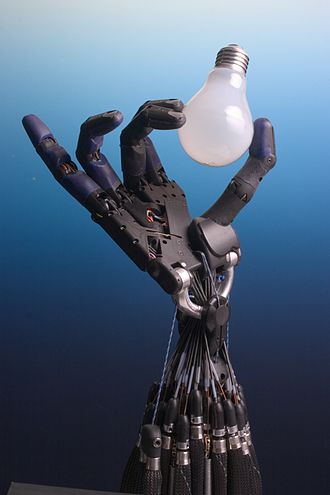|
| v |
A BE course, or Bachelor of Engineering course, is an undergraduate program that offers students a comprehensive education in engineering principles and skills. It covers various engineering branches, such as civil, mechanical, electrical, or computer engineering, allowing students to specialize in their chosen field.
- Computer Science Engineering
- Civil Engineering
- Mechanical Engineering
- Electrical Engineering
- Chemical Engineering
- Aerospace Engineering
- Robotic Engineering
Computer Science
Computer science is the study of computation, information, and automation.[1][2][3] Computer science spans theoretical disciplines (such as algorithms, theory of computation, and information theory) to applied disciplines (including the design and implementation of hardware and software).[4][5][6] Though more often considered an academic discipline, computer science is closely related to computer programming.[7] Algorithms and data structures are central to computer science.[8] The theory of computation concerns abstract models of computation and general classes of problems that can be solved using them. The fields of cryptography and computer security involve studying the means for secure communication and for preventing security vulnerabilities. Computer graphics and computational geometry address the generation of images. Programming language theory considers different ways to describe computational processes, and database theory concerns the management of repositories of data. Human–computer interaction investigates the interfaces through which humans and computers interact, and software engineering focuses on the design and principles behind developing software. Areas such as operating systems, networks and embedded systems investigate the principles and design behind complex systems. Computer architecture describes the construction of computer components and computer-operated equipment. Artificial intelligence and machine learning aim to synthesize goal-orientated processes such as problem-solving, decision-making, environmental adaptation, planning and learning found in humans and animals. Within artificial intelligence, computer vision aims to understand and process image and video data, while natural language processing aims to understand and process textual and linguistic data.
Click here to know about Gottfried Wilhelm Leibniz
Click here to know about Charles Babbage
Click here to know about Ada Lovelace
Click here To Go TOP
Civil Engineering
Civil engineering is a professional engineering discipline that deals with the design, construction, and maintenance of the physical and naturally built environment, including public works such as roads, bridges, canals, dams, airports, sewage systems, pipelines, structural components of buildings, and railways.[1][2] Civil engineering is traditionally broken into a number of sub-disciplines. It is considered the second-oldest engineering discipline after military engineering,[3] and it is defined to distinguish non-military engineering from military engineering.[4] Civil engineering can take place in the public sector from municipal public works departments through to federal government agencies, and in the private sector from locally based firms to global Fortune 500 companies.[5]
Click here to know about Leonhard Euler
Click here to know about John Smeaton
Click here to know about Chichen Itza
Click here To Go TOP
Mechanical Engineering
Mechanical engineering is the study of physical machines that may involve force and movement. It is an engineering branch that combines engineering physics and mathematics principles with materials science, to design, analyze, manufacture, and maintain mechanical systems.[1] It is one of the oldest and broadest of the engineering branches. Mechanical engineering requires an understanding of core areas including mechanics, dynamics, thermodynamics, materials science, design, structural analysis, and electricity. In addition to these core principles, mechanical engineers use tools such as computer-aided design (CAD), computer-aided manufacturing (CAM), and product lifecycle management to design and analyze manufacturing plants, industrial equipment and machinery, heating and cooling systems, transport systems, aircraft, watercraft, robotics, medical devices, weapons, and others.[2][3]
Degrees in mechanical engineering are offered at various universities worldwide. Mechanical engineering programs typically take four to five years of study depending on the place and university and result in a Bachelor of Engineering (B.Eng. or B.E.), Bachelor of Science (B.Sc. or B.S.), Bachelor of Science Engineering (B.Sc.Eng.), Bachelor of Technology (B.Tech.), Bachelor of Mechanical Engineering (B.M.E.), or Bachelor of Applied Science (B.A.Sc.) degree, in or with emphasis in mechanical engineering. In Spain, Portugal and most of South America, where neither B.S. nor B.Tech. programs have been adopted, the formal name for the degree is "Mechanical Engineer", and the course work is based on five or six years of training. In Italy the course work is based on five years of education, and training, but in order to qualify as an Engineer one has to pass a state exam at the end of the course. In Greece, the coursework is based on a five-year curriculum.[27] In the United States, most undergraduate mechanical engineering programs are accredited by the Accreditation Board for Engineering and Technology (ABET) to ensure similar course requirements and standards among universities. The ABET web site lists 302 accredited mechanical engineering programs as of 11 March 2014.[28] Mechanical engineering programs in Canada are accredited by the Canadian Engineering Accreditation Board (CEAB),[29] and most other countries offering engineering degrees have similar accreditation societies. In Australia, mechanical engineering degrees are awarded as Bachelor of Engineering (Mechanical) or similar nomenclature, although there are an increasing number of specialisations. The degree takes four years of full-time study to achieve. To ensure quality in engineering degrees, Engineers Australia accredits engineering degrees awarded by Australian universities in accordance with the global Washington Accord. Before the degree can be awarded, the student must complete at least 3 months of on the job work experience in an engineering firm.[30] Similar systems are also present in South Africa and are overseen by the Engineering Council of South Africa (ECSA). In India, to become an engineer, one needs to have an engineering degree like a B.Tech. or B.E., have a diploma in engineering, or by completing a course in an engineering trade like fitter from the Industrial Training Institute (ITIs) to receive a "ITI Trade Certificate" and also pass the All India Trade Test (AITT) with an engineering trade conducted by the National Council of Vocational Training (NCVT) by which one is awarded a "National Trade Certificate". A similar system is used in Nepal.[31] Some mechanical engineers go on to pursue a postgraduate degree such as a Master of Engineering, Master of Technology, Master of Science, Master of Engineering Management (M.Eng.Mgt. or M.E.M.), a Doctor of Philosophy in engineering (Eng.D. or Ph.D.) or an engineer's degree. The master's and engineer's degrees may or may not include research. The Doctor of Philosophy includes a significant research component and is often viewed as the entry point to academia.[32] The Engineer's degree exists at a few institutions at an intermediate level between the master's degree and the doctorate.
Click here To Go TOP
Electrical Engineering
Electrical engineering is an engineering discipline concerned with the study, design, and application of equipment, devices, and systems which use electricity, electronics, and electromagnetism. It emerged as an identifiable occupation in the latter half of the 19th century after the commercialization of the electric telegraph, the telephone, and electrical power generation, distribution, and use. Electrical engineering is now divided into a wide range of different fields, including computer engineering, systems engineering, power engineering, telecommunications, radio-frequency engineering, signal processing, instrumentation, photovoltaic cells, electronics, and optics and photonics. Many of these disciplines overlap with other engineering branches, spanning a huge number of specializations including hardware engineering, power electronics, electromagnetics and waves, microwave engineering, nanotechnology, electrochemistry, renewable energies, mechatronics/control, and electrical materials science.[a] Electrical engineers typically hold a degree in electrical engineering or electronic engineering. Practicing engineers may have professional certification and be members of a professional body or an international standards organization. These include the International Electrotechnical Commission (IEC), the Institute of Electrical and Electronics Engineers (IEEE) and the Institution of Engineering and Technology (IET, formerly the IEE).
Click here to know about Michael_Faraday
Click here to know about Guglielmo_Marconi
Click here to know about Transistor
Click here To Go TOP
Chemical engineer
Chemical engineering is an engineering field which deals with the study of operation and design of chemical plants as well as methods of improving production. Chemical engineers develop economical commercial processes to convert raw materials into useful products. Chemical engineering uses principles of chemistry, physics, mathematics, biology, and economics to efficiently use, produce, design, transport and transform energy and materials. The work of chemical engineers can range from the utilization of nanotechnology and nanomaterials in the laboratory to large-scale industrial processes that convert chemicals, raw materials, living cells, microorganisms, and energy into useful forms and products. Chemical engineers are involved in many aspects of plant design and operation, including safety and hazard assessments, process design and analysis, modeling, control engineering, chemical reaction engineering, nuclear engineering, biological engineering, construction specification, and operating instructions. Chemical engineers typically hold a degree in Chemical Engineering or Process Engineering. Practicing engineers may have professional certification and be accredited members of a professional body. Such bodies include the Institution of Chemical Engineers (IChemE) or the American Institute of Chemical Engineers (AIChE). A degree in chemical engineering is directly linked with all of the other engineering disciplines, to various extents.
 | A 1996 article cites James F. Donnelly for mentioning an 1839 reference to chemical engineering in relation to the production of sulfuric acid.[1] In the same paper, however, George E. Davis, an English consultant, was credited with having coined the term.[2] Davis also tried to found a Society of Chemical Engineering, but instead, it was named the Society of Chemical Industry (1881), with Davis as its first secretary.[3][4] The History of Science in United States: An Encyclopedia puts the use of the term around 1890.[5] "Chemical engineering", describing the use of mechanical equipment in the chemical industry, became common vocabulary in England after 1850.[6] By 1910, the profession, "chemical engineer," was already in common use in Britain and the United States.[7] |
Click here To Go TOP
Aerospace engineer
Aerospace engineering is the primary field of engineering concerned with the development of aircraft and spacecraft.[3] It has two major and overlapping branches: aeronautical engineering and astronautical engineering. Avionics engineering is similar, but deals with the electronics side of aerospace engineering. "Aeronautical engineering" was the original term for the field. As flight technology advanced to include vehicles operating in outer space, the broader term "aerospace engineering" has come into use.[4] Aerospace engineering, particularly the astronautics branch, is often colloquially referred to as "rocket science".[5][a]
 | n response to the USSR launching the first satellite, Sputnik, into space on October 4, 1957, U.S. aerospace engineers launched the first American satellite on January 31, 1958. The National Aeronautics and Space Administration was founded in 1958 as a response to the Cold War. In 1969, Apollo 11, the first human space mission to the moon took place. It saw three astronauts enter orbit around the Moon, with two, Neil Armstrong and Buzz Aldrin, visiting the lunar surface. The third astronaut, Michael Collins, stayed in orbit to rendezvous with Armstrong and Aldrin after their visit.[14] A jet in flight A F/A-18F Super Hornet in flight, 2008 An important innovation came on January 30, 1970, when the Boeing 747 made its first commercial flight from New York to London. This aircraft made history and became known as the "Jumbo Jet" or "Whale"[15] due to its ability to hold up to 480 passengers.[16] Another significant development in aerospace engineering came in 1976, with the development of the first passenger supersonic aircraft, the Concorde. The development of this aircraft was agreed upon by the French and British on November 29, 1962.[17] On December 21, 1988, the Antonov An-225 Mriya cargo aircraft commenced its first flight. It holds the records for the world's heaviest aircraft, heaviest airlifted cargo, and longest airlifted cargo, and has the widest wingspan of any aircraft in operational service.[18] |
Click here To Go TOP
Robotic engineer
Robotics is the interdisciplinary study and practice of the design, construction, operation, and use of robots.[1] Within mechanical engineering, robotics is the design and construction of the physical structures of robots, while in computer science, robotics focuses on robotic automation algorithms. Other disciplines contributing to robotics include electrical, control, software, information, electronic, telecommunication, computer, mechatronic, materials and biomedical engineering. The goal of most robotics is to design machines that can help and assist humans. Many robots are built to do jobs that are hazardous to people, such as finding survivors in unstable ruins, and exploring space, mines and shipwrecks. Others replace people in jobs that are boring, repetitive, or unpleasant, such as cleaning, monitoring, transporting, and assembling. Today, robotics is a rapidly growing field, as technological advances continue; researching, designing, and building new robots serve various practical purposes.
 | Manufacturing. Robots have been increasingly used in manufacturing since the 1960s. According to the Robotic Industries Association US data, in 2016 the automotive industry was the main customer of industrial robots with 52% of total sales.[4] In the auto industry, they can amount for more than half of the "labor". There are even "lights off" factories such as an IBM keyboard manufacturing factory in Texas that was fully automated as early as 2003.[5] Autonomous transport including self-driving cars and airplane autopilot Domestic robots including Robotic vacuum cleaners Construction robots. Construction robots can be separated into three types: traditional robots, robotic arm, and robotic exoskeleton.[6] Agricultural robots.[7] The use of robots in agriculture is closely linked to the concept of AI-assisted precision agriculture and drone usage.[8] Medical robots of various types (such as da Vinci Surgical System and Hospi); and Robot-assisted surgery designed and used in clinics.[9] Food processing. Commercial examples of kitchen automation are Flippy (burgers), Zume Pizza (pizza), Cafe X (coffee), Makr Shakr (cocktails), Frobot (frozen yogurts), Sally (salads),[10] salad or food bowl robots manufactured by Dexai (a Draper Laboratory spinoff, operating on military bases), and integrated food bowl assembly systems manufactured by Spyce Kitchen (acquired by Sweetgreen) and Silicon Valley startup Hyphen.[11] Home examples are Rotimatic (flatbreads baking)[12] and Boris (dishwasher loading).[13] Automated mining Space exploration, including Mars rovers Cleanup of contaminated areas, such as toxic waste or nuclear facilities.[a] Robotic lawn mowers and Sports field line marking. Robot sports for entertainment and education, including Robot combat, Autonomous racing, drone racing, and FIRST Robotics Military robots.v |
Click here To Go TOP